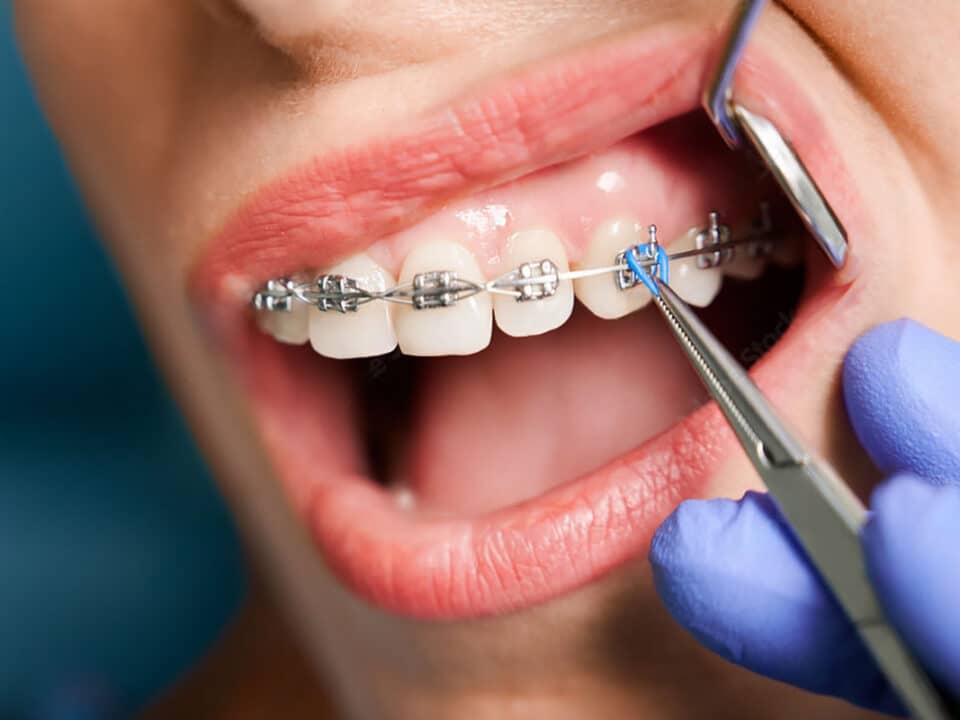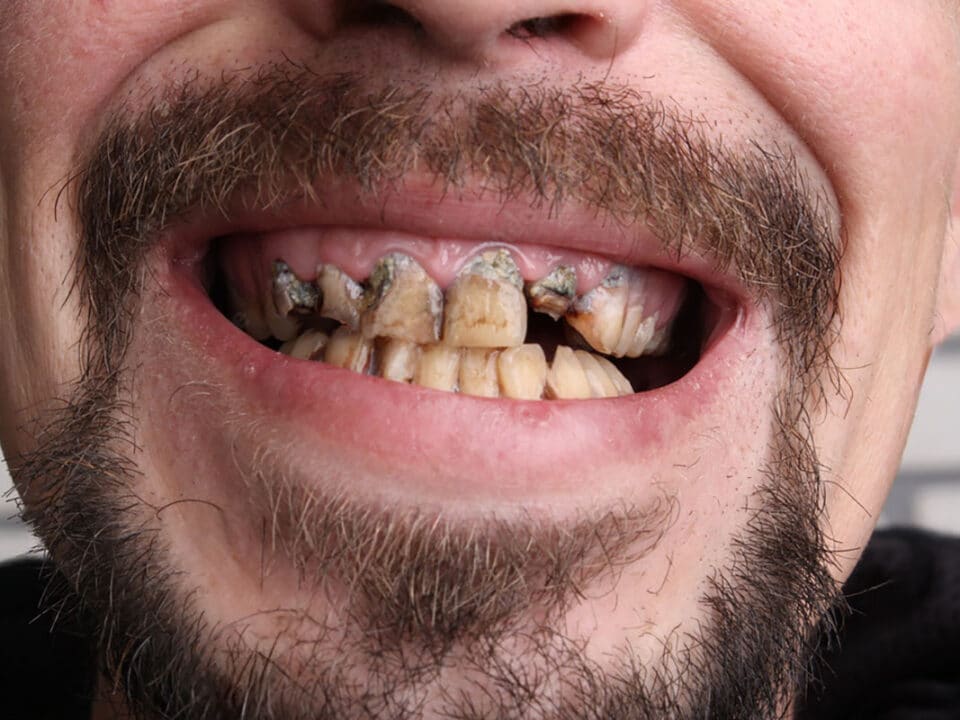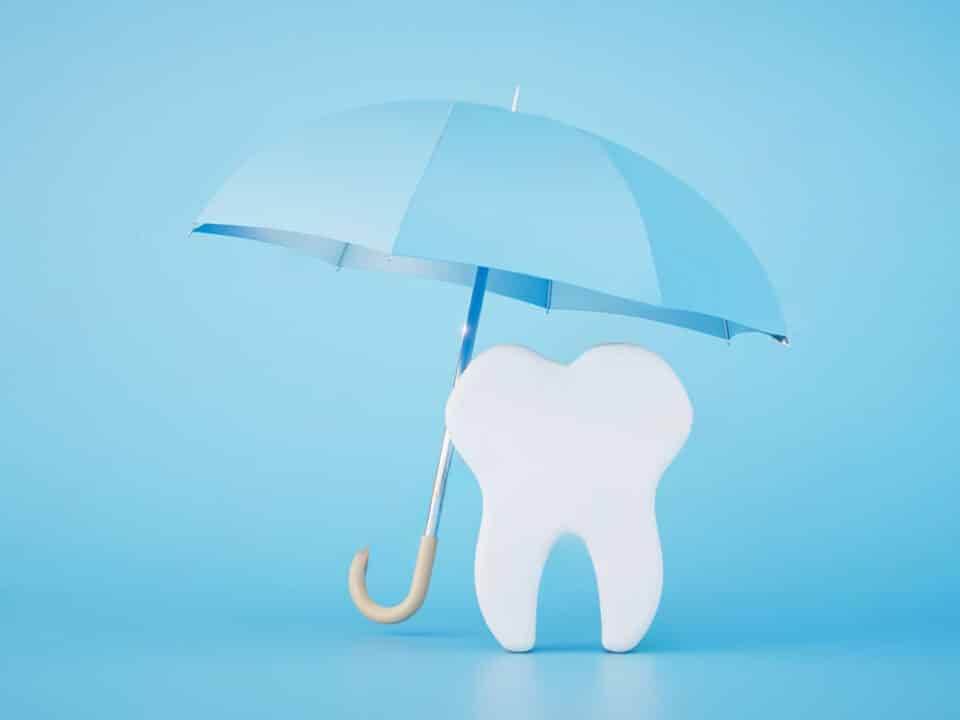Table of Contents
As cosmetic dentists, we complete many dental veneer procedures for our patients. We aren’t only experts at designing and installing veneers; we also understand the potential pitfalls that can happen if things aren’t done right. Our process is always to have a long consultation with the patient to ensure they understand everything involved and that the veneers’ size, shape and colour will look great.
That being said, it has happened that a patient changes their mind after treatment completion and decide they want their teeth to look different. It’s a very rare occurrence, but that’s when the question of can dental veneers be reshaped after they’ve been placed arises. We also get patients who come to us because they are unhappy with porcelain veneers they’ve received elsewhere.
Can dental veneers be reshaped?
It’s unfortunate, but the truthful answer to can dental veneers be changed is there often isn’t much to be done once dental veneers are put in place. That’s not to say we can’t complete minor reshaping, but generally, the whole veneer(s) must be removed and replaced for a different look. Planning properly and getting them right the first time is crucial to avoid the hassle and expense of having dental veneers redone.
How to alter veneers
Depending on the issue, we may be able to re-sculpt veneers but it’s usually quite complicated. For example, if the veneers are too long, we may be able to shave them down a bit, but this depends on the veneer material and how much material is left to cover the actual tooth. Reshaping means sanding and drilling, which causes vibrations that could easily crack or risk micro-fractures in the veneer material.
Even if the veneer looks fine after a reshape, there is still a risk that it could break during normal use later on. Either way, veneers usually fit pretty tightly and taking any significant amount of material off is usually not possible.
The same goes for the shape of the veneer, where only minor changes can usually be made. Taking the point off a prominent canine tooth or round the corners on square-looking veneers is possible, but major cosmetic changes are typically impossible.
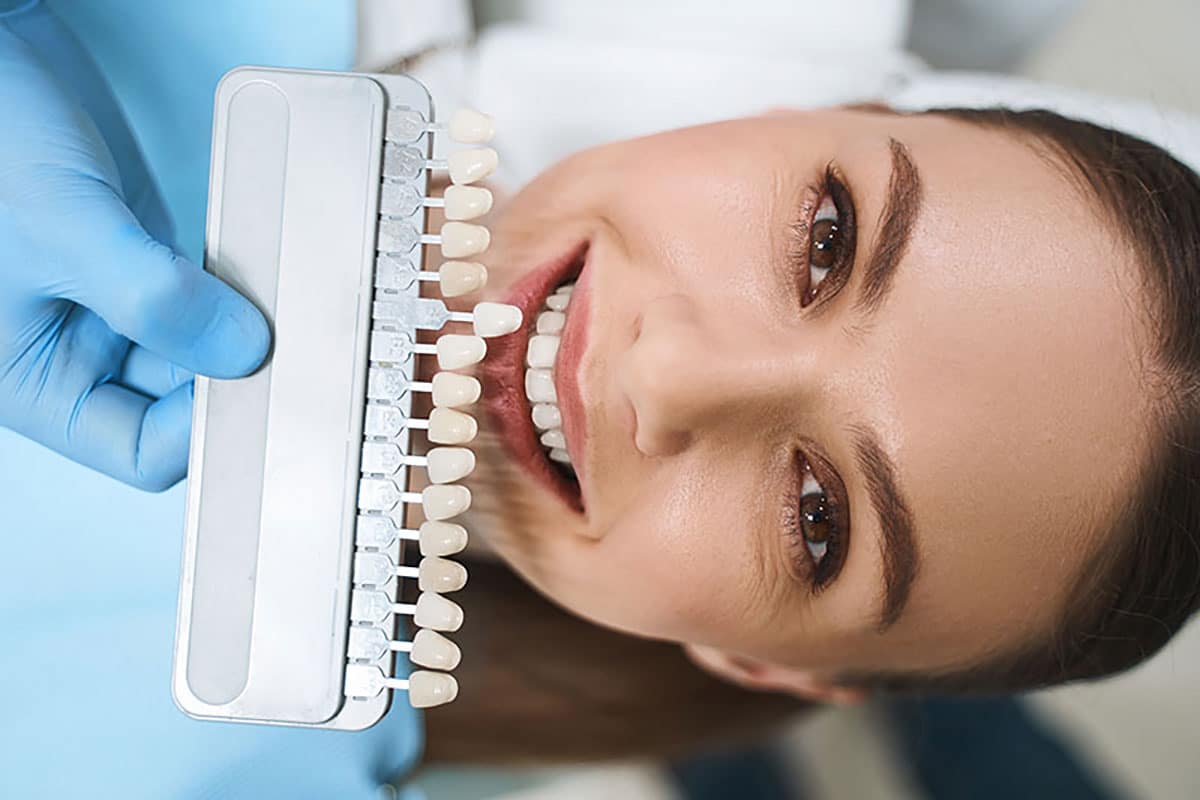
In terms of colour, the material veneers are made from is designed to be very stain resistant so that they will stay the same colour for decades with proper care. It’s usually a great feature but makes it difficult to darken or lighten the veneer colour to any great effect.
Removing unsatisfactory veneers and redoing the whole process is the only guaranteed route to the smile you want. Dental veneers must be designed and installed properly on the first go.
How dental veneers are installed (and why you can’t easily modify them)
Installing veneers is one of the most common procedures for cosmetic dentists. That’s not to say it’s an easy task because there are a lot of steps that you and your dentist need to ensure are done correctly. This includes choosing the right veneer (shape, colour etc.) and following through with a proper application.
The process of applying veneers generally works like this:
1. Consultation and Treatment Planning
You and your dentist will discuss your smile goals and expectations during an initial consultation. Your dentist will evaluate your oral health, examine your teeth, and determine if porcelain veneers are suitable for you. They will also explain the procedure, discuss the potential outcomes, and address any concerns or questions you may have.
2. Tooth Preparation
In most cases, a thin layer of enamel must be removed from the front surface of the teeth receiving the veneers. This creates space for the veneer and ensures a proper fit. Local anesthesia may be administered to ensure your comfort during this process. Enamel removal is typically minimal, usually less than a millimetre.

3. Impressions
After tooth preparation, your dentist will take impressions of your teeth. These impressions serve as a mould for the dental laboratory to fabricate custom veneers that fit your teeth precisely. Your dentist may also take digital scans of your teeth using a dental scanner, eliminating the need for traditional impressions.
4. Temporary Veneers
While your permanent veneers are being crafted in the dental laboratory, temporary veneers may be placed on your prepared teeth. These temporaries protect your teeth and provide aesthetic improvement until the final veneers are ready.
5. Veneer Bonding
Once your custom porcelain veneers are fabricated, you will return to the dentist for bonding. Your dentist will place the veneers on your teeth to assess their fit, shape, and colour. Adjustments can be made if necessary. Once you and your dentist are satisfied with the veneers, they will be permanently bonded to your teeth using dental adhesive. The veneers are carefully positioned and then hardened using a curing light.
6. Final Adjustments
After bonding the veneers, your dentist will make any final adjustments to ensure proper bite alignment and optimal aesthetics. They may trim and polish the veneers to achieve the desired shape and appearance.
7. Follow-Up Visit
A follow-up visit may be scheduled to evaluate the veneers’ fit, comfort, and long-term success. Your dentist will assess your oral health and make sure you are satisfied with the results.
How to ensure your dental veneers are installed correctly the first time
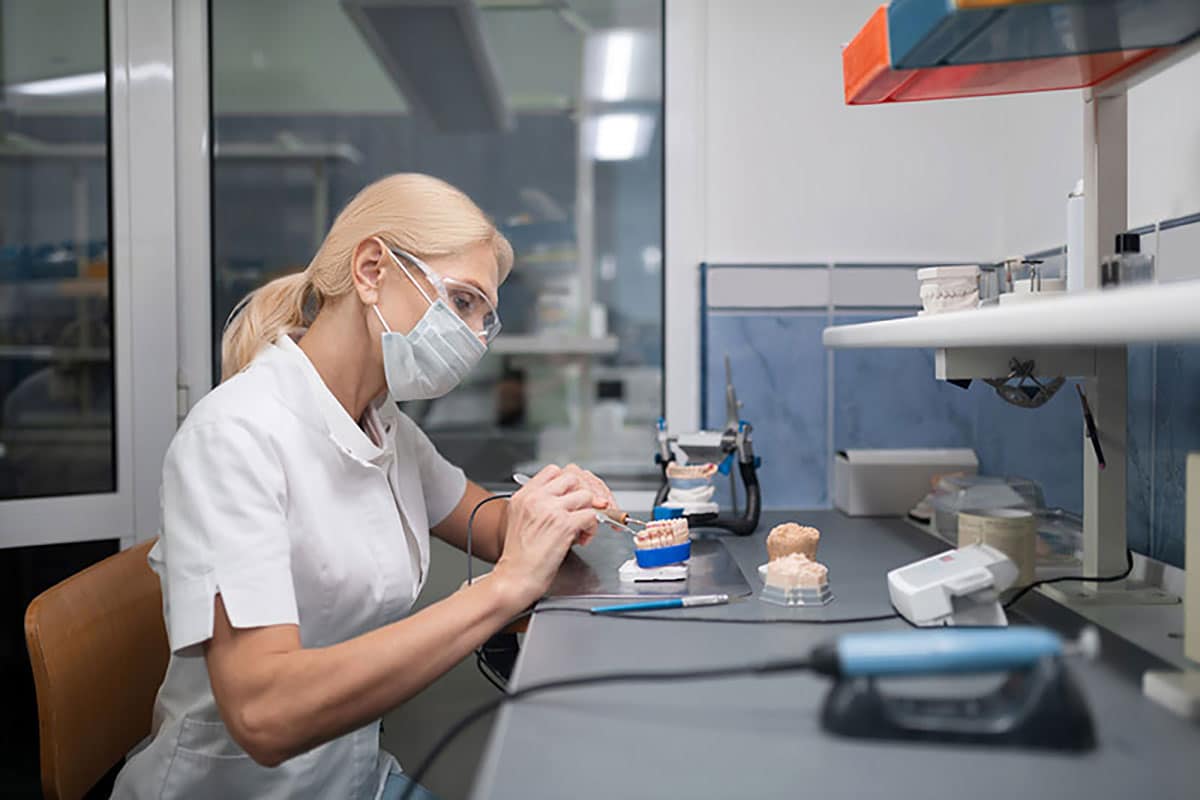
Dental veneers aren’t only time-consuming to get, but they’re also not an inexpensive cosmetic upgrade. The veneers you choose will be a large part of your smile, and you’ll definitely want them to look the way you intend. That means taking the necessary steps to make sure you’re satisfied with the results.
Choose a great cosmetic dentist
Your cosmetic dentist can make all the difference to the quality and success of your dental veneer smile makeover. That’s because they’ll be prepping your teeth and designing the veneers. They’ll communicate with the lab (who fabricates the veneers) and then evaluate the quality of your finished veneers. Your cosmetic dentist will also be the one installing the veneers onto your teeth. It’s not often a straightforward process, so you’ll want a dentist with the experience and skills to ensure everything is right at every step.
Choose high-quality veneers for your smile
There are a lot of material choices on the market, and not all dental veneers are of equal quality. Some material doesn’t look all that natural or lack the lustre you’d want for your smile. The strength of the finished veneer is also in question, especially if a thin veneer is preferred. Not all materials are capable of being shaped into delicate shapes and will create a bulky appearance.
Always consult your dentist about the details
The most common problem with dental veneers is that patients aren’t happy with their appearance. This is usually due to a failure during the consultation and design process where the wrong type, shape or colour were selected. Do you want your teeth enlarged and extra bright or more subdued and natural looking? The choice is yours, but you must speak up and work with your dentist to create the perfect design. Our cosmetic dentists are great veneer technicians and can make suggestions, but it’s ultimately up to you to choose the look you want. Speak with a professional if you need help choosing dental veneers.
Can veneers be whitened?
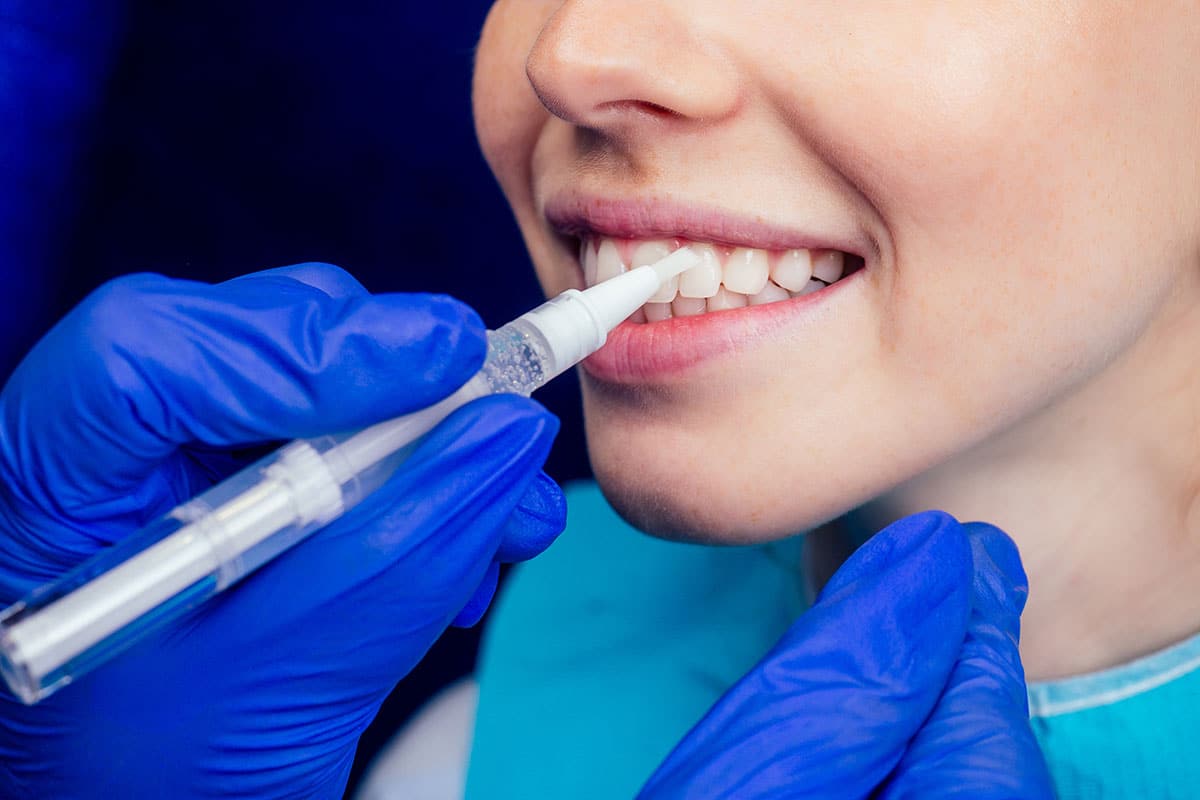
No, veneers cannot be whitened through traditional teeth-whitening methods. Veneers are typically made of porcelain or composite resin materials resistant to staining and discoloration. Unlike natural teeth, veneers do not respond to traditional whitening treatments such as bleaching agents or whitening toothpaste.
However, it’s important to note that the shade of veneers is usually selected during the initial placement to match or enhance the desired tooth colour. Discussing your options with a dental professional is recommended if you are considering whitening your teeth and having existing veneers.
If you have concerns about the colour or shade of your veneers, your best option is to replace them with new veneers that better match your desired tooth colour.
Can I get my veneers changed?
Yes, it is possible to get your veneers changed. Veneers are bonded to the front surface of your teeth and are not considered permanent. They may require replacement or modification over time, even through normal usage and wear. However, veneers must be removed and replaced in order to change them significantly.
Can dental veneers be refitted if I don’t like them?
The answer here is maybe. In some circumstances, veneers can be refitted if a patient is experiencing pain or discomfort due to improper alignment or changes in the shape of their teeth/jaw. The alterations a dentist can make are generally limited to minor reshaping, such as reducing the size of the veneer. Alterations like changing the colour of veneers or large-scale size adjustments will require the veneers to be removed and replaced.
Unfortunately, many issues with veneers cannot be resolved through refitting. If the veneers are extensively damaged or misaligned, or if the underlying tooth structure has significantly changed, replacement of the veneers may be necessary.
When do veneers need to be changed?

Veneers may need to be changed or replaced under certain circumstances. While veneers are durable and long-lasting, they are not considered permanent and may require replacement.
Here are some situations where veneers may need to be changed:
1. Damage or Wear
Veneers can become damaged or worn down over time due to factors such as teeth grinding (bruxism), biting on hard objects, or trauma to the mouth. If a veneer chips, cracks, or breaks, it may need to be replaced to restore its appearance and functionality.
2. Discoloration or Staining
Although veneers resist staining, the underlying tooth structure or the margins of the veneers can still become discoloured or stained over time. If the discoloration cannot be improved through professional cleaning or teeth whitening, replacing the veneers may be considered.
3. Changes in Tooth Structure
Over time, natural teeth may change shape, size, or alignment due to factors such as aging, tooth movement, or dental procedures like orthodontic treatment. If these changes affect the fit or appearance of the veneers, replacement may be necessary to ensure proper aesthetics and functionality.
4. Aesthetic Concerns
If you are unhappy with your veneers’ colour, shape, size, or overall appearance, you may choose to have them changed for cosmetic reasons. This could be due to personal preference or changes in your desired smile aesthetics.
5. Marginal Integrity Issues
Veneers rely on a strong bond between the tooth and the veneer material. If the bonding becomes compromised or there are issues with the margins of the veneers, such as gaps or recurrent decay, replacing the veneers may be necessary to maintain proper oral health and aesthetics.
Why do veneers break?

Veneers can break or become damaged due to several reasons. While veneers are designed to be durable, they are not indestructible, meaning they may need to be replaced at some point.
The most common causes of veneer breakage we see include:
1. Trauma or Accidents
A significant impact or trauma to the mouth, such as a sports injury or a fall, can cause veneers to break. Veneers may fracture or chip if they experience direct force or sudden pressure.
2. Teeth Grinding (Bruxism)
Habitual teeth grinding or clenching, known as bruxism, can exert excessive pressure on veneers, leading to their fracture or damage. Bruxism often occurs during sleep and may require a mouthguard or other protective measures to prevent veneer breakage.
3. Biting on Hard Objects
Using your teeth to bite or chew on hard objects like ice, pens, or fingernails can put excessive stress on veneers, increasing the risk of damage. It is important to avoid such habits to protect the integrity of your veneers.
4. Poor Dental Hygiene
Poor oral hygiene can lead to dental issues, including decay and gum disease. If the underlying tooth structure supporting the veneer becomes compromised due to decay or gum recession, it can weaken it and make it more prone to breakage.
5. Weakening Over Time
While veneers resist staining and discoloration, the underlying bonding material and the adhesive used to attach the veneers to the teeth may weaken over time. This can contribute to the risk of veneer breakage.
6. Incorrect Bite Alignment
If the bite alignment is incorrect or there is an imbalance in the forces exerted on the veneers during chewing or biting, it can increase the stress on the veneers and lead to their fracture.
Keep in mind that proper care, regular dental check-ups, and adherence to good oral hygiene practices can help minimize the risk of veneer breakage. If you have veneers, avoiding habits that can put excessive stress on them and maintaining regular dental appointments to monitor their condition is recommended.
How to remove dental veneers?

Dental veneers can be removed, but the process requires professional dental care. A qualified dentist should always perform the removal of veneers to ensure your teeth’ safety and minimize any potential damage.
This is generally how we accomplish the task of removing dental veneers:
1. Examination and Evaluation
Before removing the veneers, your dentist will thoroughly examine your teeth and veneers. They will evaluate the condition of the veneers, assess the bonding material, and determine the best approach for removal.
2. Numbing the Area (Optional)
Depending on your sensitivity and comfort level, your dentist may administer a local anesthetic to numb the area around the veneers. This step is typically optional, as veneer removal is generally a painless procedure.
3. Veneer Bond Separation
Your dentist will carefully and gently separate the veneers from your teeth. They may use specialized dental instruments, carefully lifting the edges and gradually detaching the veneers from the tooth surface. This process requires skill and precision to avoid damaging the underlying tooth structure.
4. Cleaning and Polishing
Once the veneers are removed, any remaining bonding material or adhesive residue will be cleaned off the tooth surfaces. The teeth may be polished to restore their natural appearance. This preps the teeth for a new veneer to be bonded in place.
5. Dental Examination
After veneer removal, your dentist will examine the underlying teeth to assess their condition and discuss any further treatment options or restoration, if necessary.
Will I require new veneers after removing the old ones?
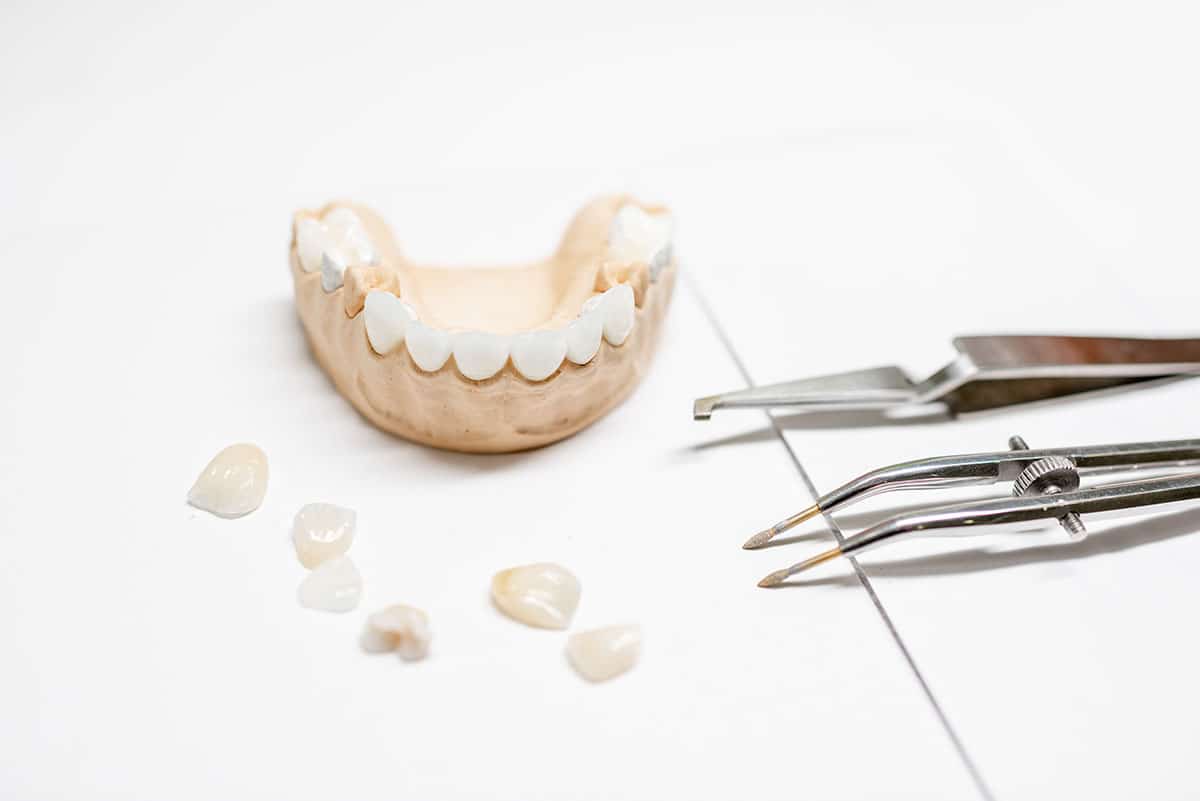
It’s important to note that veneer removal may not always be reversible, as some tooth preparation or enamel removal may have occurred during the initial veneer placement. Your dentist will evaluate the situation and advise you on the best action based on your specific needs.
Typically, you will be required to mount new veneers after removing the existing ones. This is because the above-mentioned tooth preparation will have removed enamel and shaped your teeth. The fact that veneers will always be required is one of the concerns many patients have with getting dental veneers in the first place.
In conclusion
Dental veneers can make a world of difference to your smile, both cosmetically and functionally, but they must be designed and installed correctly. Our Martindale cosmetic dentists have decades of experience with dental veneers and know how to successfully guide all our patients through the process. Our team is well-known by our patients for delivering great work and beautiful smiles.
Check us out on Facebook and Twitter for daily information about Oral Health from Martindale Dental, or visit our offices in Hamilton and St. Catharines.
Have more questions?
Please contact us for all inquiries or to book an appointment with one of our convenient clinic locations. We look forward to hearing from you.


